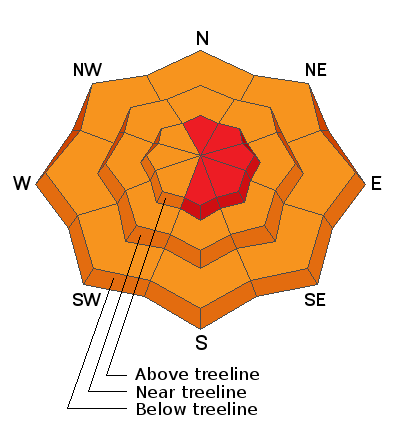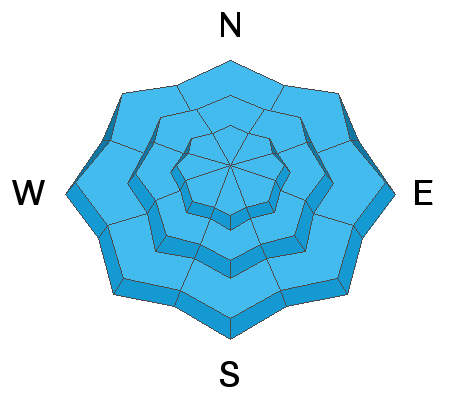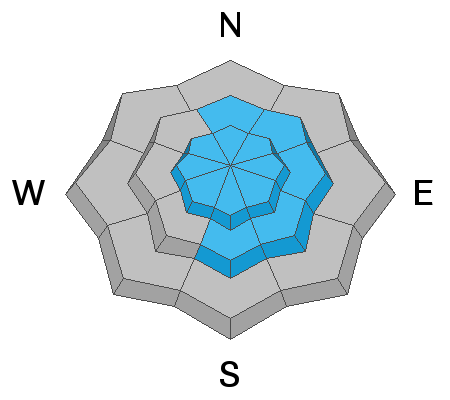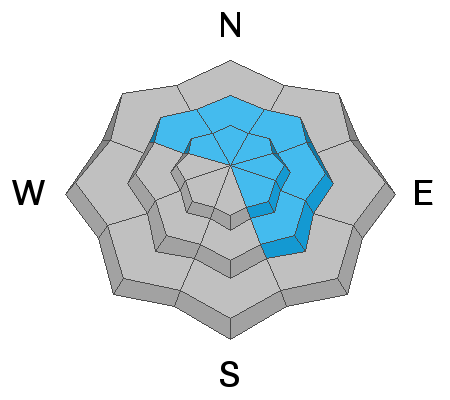The Geyser Pass Road will be getting plowed sometime later today and it is currently impassable. Grand County plow crews will be busy with residential areas first. Please be patient.
The Lower Utah Nordic Alliance (LUNA) has no plans to groom.
24 Hour Snow 5" 72 Hour Snow 28" Base Depth in Gold Basin 72" Wind NW 10-15 G20 Temp 21F
NW winds finally backed off this morning after climaxing with gusts up to 90 mph around 8:00 p.m. last night. Today look for partly cloudy skies as a transient ridge slides over the region. WNW winds will be mostly light switching to SW later today. High temps at 10,000' will be near 30F. On Tuesday, the next closed low moves in just south of the 4 Corners bringing us another chance for snow though amounts look light. Conditions dry out and warm up for the remainder of the week.
Snowpack Discussion
If more than 3' of snow over the past week hasn't been enough then yesterday's winds definitely were. Blowing and drifting snow reached epic proportions yesterday as reported by Travis Nauman in this
observation. Expect to find deep and drifted snow and dangerous avalanche conditions today. Human-triggered avalanches within the new snow remain likely on steep slopes on all aspects, and human-triggered avalanches on steep, wind drifted slopes remain very likely. I don't yet know if this was enough of a load to trigger avalanches down to buried persistent weak layers in the snowpack, but for now I'm assuming that deep and dangerous, human-triggered avalanches up to 5' deep remain possible on steep slopes facing NW-N-E-SE. Back-country travelers need to have excellent route finding skills and know how to stay off of and out from under avalanche terrain.
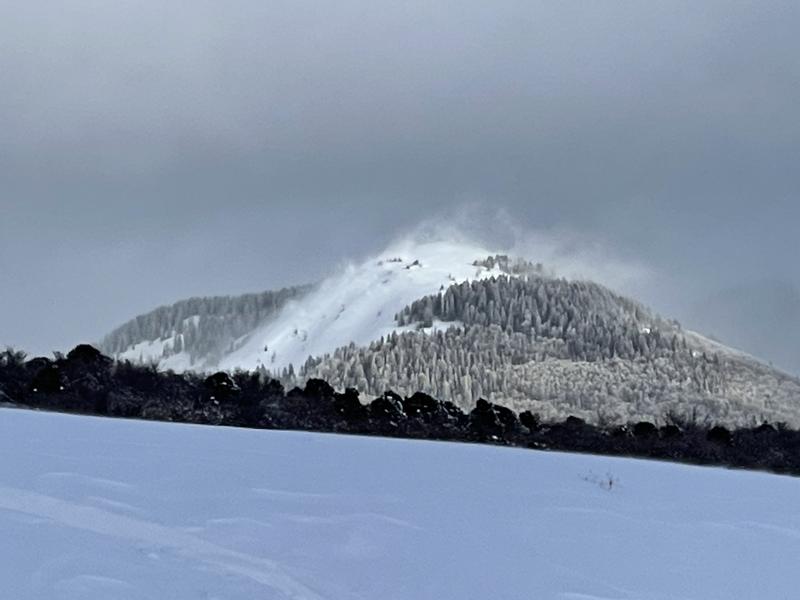
Tim Mathews sent in this photo of blowing snow yesterday. This is at a fairly low elevation with the ridge topping out at around 10,500'. More than 2000' of terrain exists above this.

